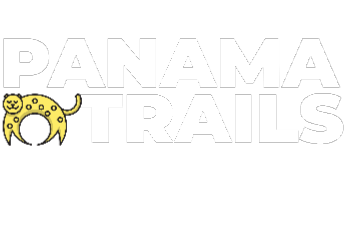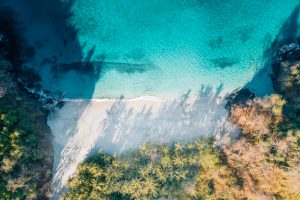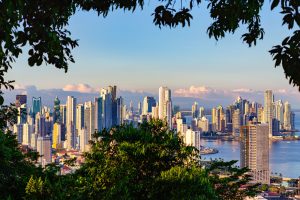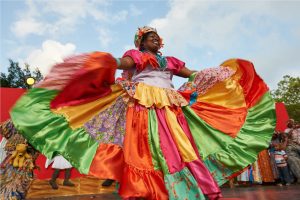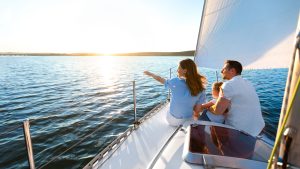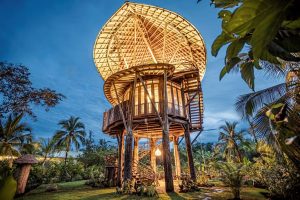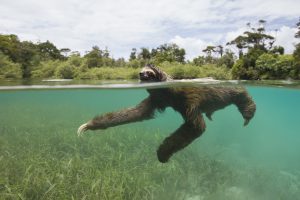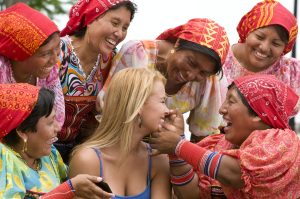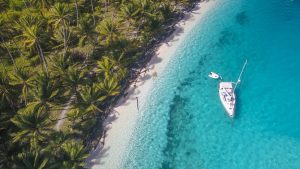Get to Know Our
Beloved Panama
Panama:
The Seven Regions
Dense rainforests with extraordinary biodiversity. Remote archipelagos where ancient indigenous traditions remain part of everyday life.
Quaint villages surrounded by mystical cloud forests and coffee plantations. And a coastal, skyscraper city with an iconic shipping waterway that connects the Pacific to the Atlantic Ocean.
Panama offers an astonishing variety of natural and cultural treasures that attract curious voyagers from all around the globe.
Watch:
Get to know Panama

Pamana City
The capital of Panama is Panama City, a lively, modern metropolis on the Pacific Ocean. The city offers many cultural and historical sites, and uniquely borders one of Central America’s richest forests, the Gamboa Rainforest.
It is home to one of the 7 Wonders of the Modern World: The Panama Canal. This man-made canal revolutionized international trade by connecting the Pacific and Atlantic Oceans.
Head to Miraflores Locks to see the best views of ships entering the Panama Canal.
Casco Viejo/Casco Antiguo is Panama City’s “old quarter” and is a UNESCO Cultural World Heritage Site.
When you walk the cobblestone streets, you’ll see colourful buildings and colonial-era landmarks. The area is home to the city’s best gastronomy with a vibrant dining and nightlife scene.
The Panama Airport (PTY) is your gateway to experience the best tropical islands, rainforests and beautiful beaches. COPA airlines offers many daily flights to the city of David, Chiriquí.


Colón & Portobelo
Colón
The city of Colón lies at the Caribbean entrance to the Panama Canal, and is an important center for global trade and commerce in Latin America.
The historic city center was built in stages over a period of 100 years. For this reason, the architecture is a unique blend of urban design traditions and architectural styles that reflect the city’s development and cultural diversity.
You’ll find architecture styles including Gothic Revival, Neoclassical, Art Deco and early International Style.
Colón is approximately a 1-hour drive from Panama City.
You can also choose to take the scenic route to Colón — by train — with the Panama Canal Railway. This route takes you along the Panama Canal, the Chagres River and tropical mountain ranges on both sides.
Reminiscent of the golden age of railway travel, the passenger cars feature wood paneling, tables, carpeted floors, soft lamp lighting and wooden blinds, for a unique journey.

Portobelo
Portobelo, which means beautiful port, is one of the best areas for diving. The coastline is popular due to a variety of ecosystems: coral reefs, coastal lagoons, mangrove forests and white sand beaches.
The dive sites here offer crystal clear water and coral reefs that are close to shore and not too deep.
Portobelo is also close to the tropical islands off the coasts of Panama. You can snorkel, kayak, and paddle board on the waters, or simply enjoy the sun on one of many beautiful, unspoilt beaches.
Portobelo is just under a 2-hour drive from Panama City.
It is also one of Panama’s richest historical sites. Pirates, including the notorious Henry Morgan, were frequent visitors to this town when Spain used it as a shipping center for gold and other valuable treasures.
Several forts were constructed to protect the natural harbour and those ruins remain today. The forts of Santiago and San Geronimo are UNESCO world heritage sites —just a 5-minute walk from the pier.
Explore More of Colón & Portobelo

Gulf of Chiriquí & Boquete
The Gulf of Chiriquí:
The Gulf of Chiriquí is located on the Pacific coast of Panama, surrounded by unspoilt, white sand islands, abundant vegetation, and one of the largest coral reefs in the Pacific for you to explore.
It is one of the best destinations for world-class diving, snorkeling and marine wildlife, and is home to Panama’s largest island, Coiba Island.
It is also why Panama Whale-Watching is some of the best. Two different populations of humpback whales visit Panama’s Gulf of Chiriquí between December and April — a true highlight of the marine safari experience.
The small fishing village of Boca Chica is your gateway to the Gulf of Chiriquí.
From Panama City, Boca Chica is a 6-hour drive. From David, you can easily drive to the gulf in 1-hour.
Boquete:
The charming mountain village of Boquete is tucked away on the eastern slopes of Barú Volcano at 1200 meters.
This highland area of Panama is known to produce some of the richest coffees in all of Panama. That’s why you’ll see the surrounding hills and slopes covered in shade-grown coffee plantations.
Boquete is also home to the renowned Panama Geisha Coffee — the most exclusive and expensive bean in the world.
Recognized by international coffee connoisseurs, Geisha coffee is widely known for its distinct flavour profile and demanding growing conditions.
Boquete enjoys a comfortable year-round climate ideal for outdoor adventure seekers.
Sunny, cooler temperatures invite you to enjoy numerous activities such as hiking, mountain biking, rafting, and birding. In fact, the area boasts an abundance of birds equal to those found in the cloud forests higher on the mountain.
Boquete is a 1-hour drive from David, Chiriquí.


Explore More of Gulf of Chiriquí & Boquete

Bocas Del Toro
Beautiful yet quiet beaches. Lush rainforests. Easy-going, laid-back vibes. Bocas Del Toro is where you’ll find Panama’s vibrant Caribbean side.
As one of Panama’s top attractions, Bocas Del Toro is home to a tropical rainforest, a vibrant Caribbean culture, some of the area’s indigenous cultures, like the Ngäbe and NasoTjerdi, as well as many of Panama’s most popular beaches.
Bocas Del Toro is part of Panama’s mainland and is comprised of an archipelago of 3 main islands: Isla Colon, Isla Bastimentos, and Isla Carenero.
Each island has its varied personality, and it’s easy to hop between the islands via scheduled boat shuttles and plenty of water taxis.
Spend your days in the water, surfing, snorkeling, or diving. Or explore the local wildlife and beaches — like Starfish Beach, where you can see live starfish in their natural habitat. Then in the evenings take in Bocas Del Toro’s impressive food scene and lively nightlife.
Between the rich history and culture, verdant nature and vibrant nightlife, it’s no wonder the hit TV series “Survivor” was filmed here.


Guna Yala
Guna Yala is the archipelago. Between 365 and 380 islands. White sandy beaches. Endless spectrum in shades of blue and home to spectacular rainforests of the sea—coral reefs.
Off of Panama’s Caribbean coast, less than 60 of the islands are inhabited by an Indian tribe, the Kuna. The Kuna is one of the best-preserved of all the indigenous cultures of the Americas. This preservation has protected their heritage where they have maintained their autonomy since the Spanish first arrived over 500 years ago. With their own government of indigenous independent congress and each island being run by a chief, tourism is limited to certain islands which maintains the protected and untouched natural beauty of the islands.
Hotels are operated by the Kuna tribe. Warm and rustic rooms embrace the natural and private atmosphere with the bamboo and board structure. Visitors have much to be welcomed by—snorkeling, beach games, sunbathing or lying in a hammock.
Whether it’s sipping a tropical drink or tasting fresh typical island food, the islets await you.


Azuero Peninsula
Azuero Peninsula is the heartland of Panama.
Appropriately nicknamed, the Azuero Peninsula is where you’ll find Panama’s folkloric traditions and history—combining Spanish origins with Panamanian influences.
The peninsula’s rich culture and history is abundant: You’ll find beautiful traditional clothing here, such as the stunning pollera, the national costume of Panama with its long full skirt and intricate embroidery. Handicrafts originated from, and still made, in Azuero, like ceramics based on pre-Columbian designs. As well as musical and literary traditions influencing the festivals and architecture.
Located in the center south of Panama, travel to this destination showcases the history of Panamanian culture presented by the three main towns; Chitré, Las Tablas, and Pedasí.
The town of Chitré acts as the springboard for your travels down through the peninsula and has all the necessary services and amenities waiting for you at this stop.
Las Tablas is emblematic of Panamanian culture and where you’ll find one of the largest celebrations in the country; the Carnival tradition with parades, music, street food, fireworks, concerts, contests, decorations, and more.

Pedasí is the traditional town that attracts many tourists for the notorious waves featured in worldwide surfing championships.
Within the Azuero Peninsula, the majority of the interior is farmland, cattle pasture, and towns. On the outskirts, you’ll find a seaside paradise with tan, gray or black sandy beaches that are wide and long—offering a unique and inviting twist to other beaches in Panama.
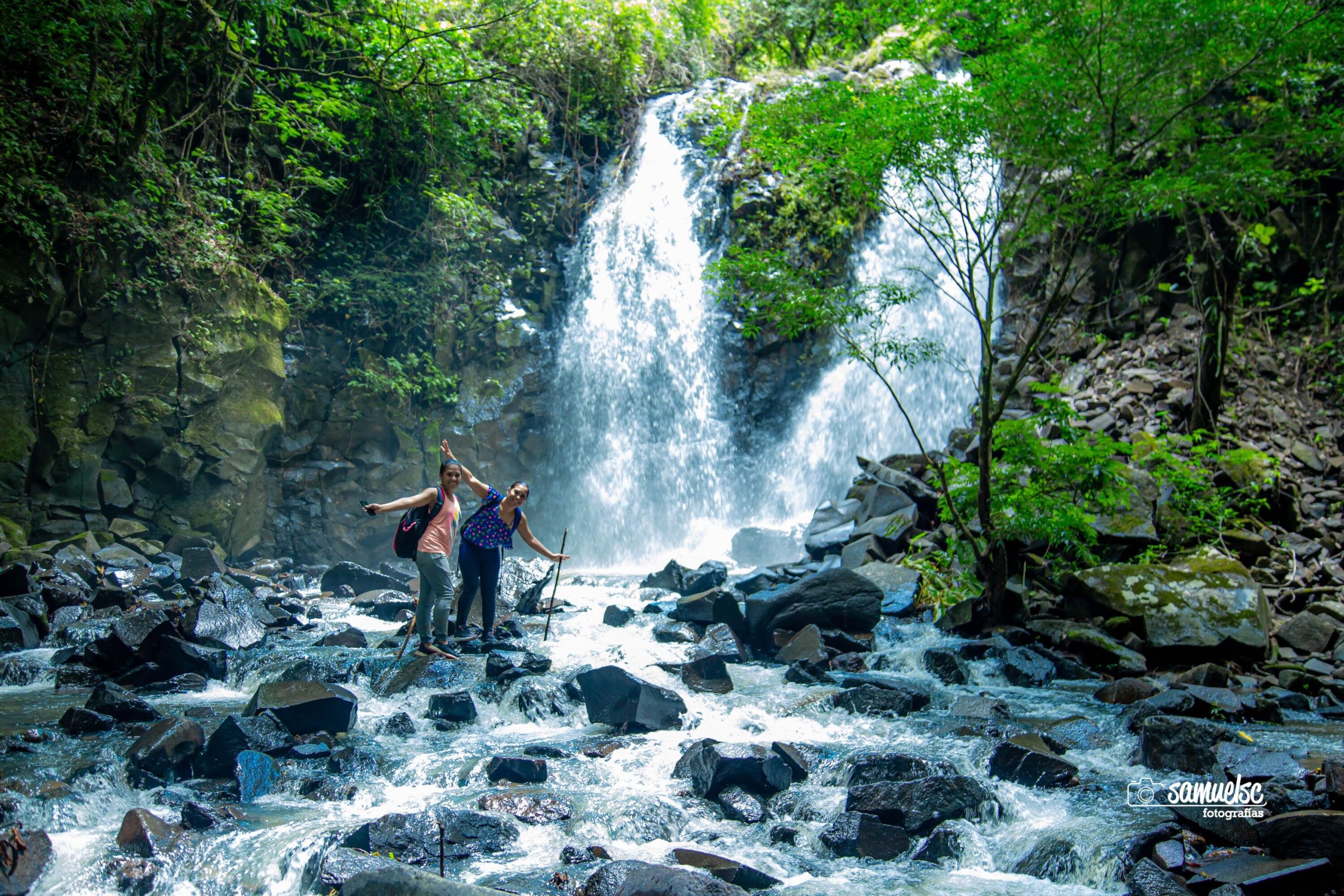
Veraguas Province
Bounding the Pacific Ocean and the Caribbean Sea with an endless coastline—Veraguas Province is the only province in the country where you have access to both oceans.
With a variety of terrains offering forests, mountains, beaches, and more, Veraguas is popular for ample activities—land or water based. Apart from the endless coastline, you’ll find the highland village of Santa Fé, the Unesco World Heritage site Isla Coiba, and the surfing village of Santa Catalina.
Santa Fé is a vibrant, yet quaint, highland village with cooler temperatures, lush hillsides, towering mountains, and kind local people—this is an authentic Panamanian town.
Here, you’ll find an off-the-beaten path experience. A combination of verdant nature and cool microclimate makes for the perfect destination for outdoor activities including hiking, waterfall trips, tubing, and horseback-riding.
Isla Coiba, also known as the Galápagos of Central America, is a Unesco World Heritage site and is surrounded by abundant marine biodiversity. It also boasts one of the largest Pacific coral reefs in the Americas —a perfect destination for divers, birdwatchers and paradise-seekers.

The surfing village Santa Catalina is considered to have the most impressive waves in Panama and is a destination in its own right, with its world-class surf and gorgeous beaches. While the waves are a relatively recent discovery to most, Santa Catalina is quickly transforming from a secluded little village to one of the most recommended places to visit during a trip to Panama.
